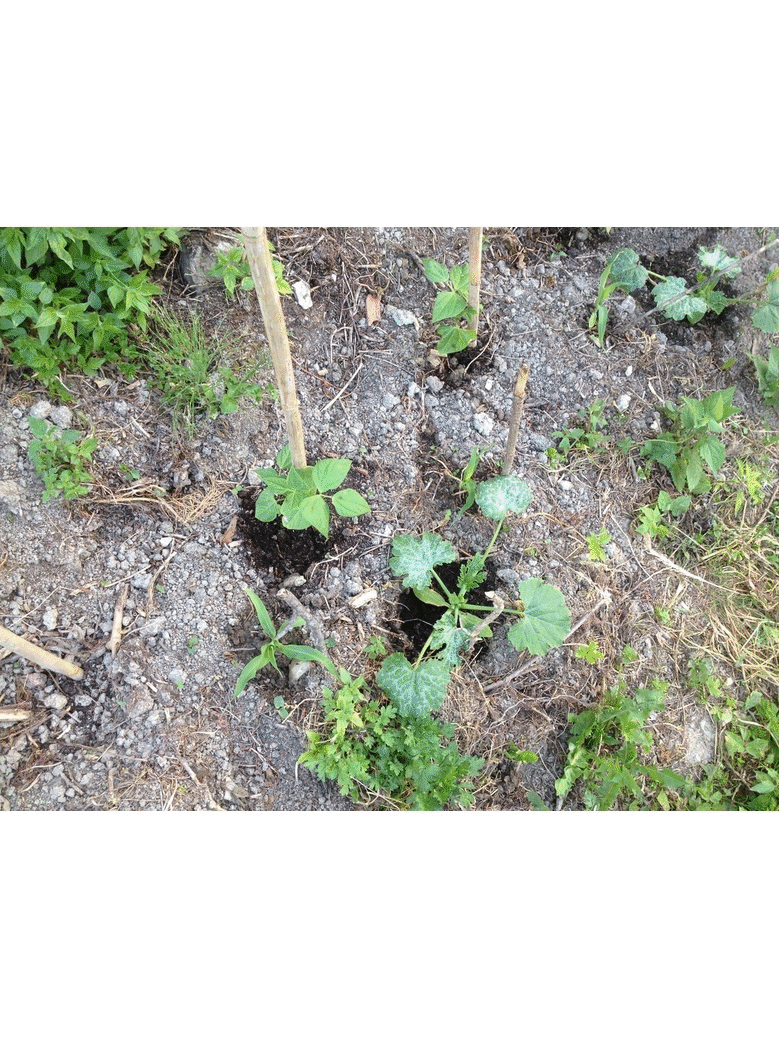Uno degli esperimenti migliori della scorsa stagione cripto-agricola, sono state le tre sorelle.
Con questo nome un po' particolare si intende una tecnica di coltivazione antichissima in quanto sviluppata nel corso di migliaia di anni dai popoli nativi americani.
Si tratta di una policoltura, o coltivazione di tre piante complementari: la zucca, il mais e il fagiolo.
One of the best experiments in the last cryptofarming season, was that of the three sisters.
With this peculiar name we call an ancient cultivation technique that has been developed over thousands years by Native Americans.
It is a polyculture, or cultivation of three complementary plants: pumpkin, corn and bean.
Perché complementari?
In primo luogo, sono complementari da un punto di vista alimentare. Il mais non contiene alcuni aminoacidi, che si trovano nel fagiolo, mentre la zucca è una buona fonte di vitamine. Se il clima lo consente (come in America Centrale) si può aggiungere l'avocado e così avere anche una buona fonte di grassi.
In secondo luogo sono complementari per la coltivazione. La pianta di fagiolo può crescere attorcigliandosi attorno al mais, evitando così la necessità di mettere ulteriori sostegni. Il fagiolo, come quasi tutte le leguminacee, è un pianta azoto-fissatore e arricchisce il terreno a favore delle altre due piante. La zucca, infine, con le sue foglie larghe crea una sorta di pacciamatura naturale: facendo ombra al terreno, ostacola le crescita delle erbacce e tiene più umido e riparato dal sole il terreno.
Geniale, vero?! Non a caso, un ricercatore del mais ha definito un sistema di coltivazione che estende questo principio ad un dozzina di piante (la milpa) "una delle invenzioni umane con maggiore successo di sempre".
Why complementary?
First, they are complementary from a nutritional point of view. Corn does not contain some amino acids found in bean, and pumpkin is a good source of vitamins. If climate allows it (as in Central America) you can add avocado and thus also have a good source of lipids.
Secondly, they are complementary in cultivation. Bean plants can grow around the corn, thus avoiding the need to put further support (as sticks). Bean, like almost all leguminaries, is a nitrogen-fixing plant and enriches the soil in favor of the other two plants. The pumpkin, with its broad leaves, creates a kind of natural mulch: shading the soil, hindering the growth of the weeds and keeping it humid and protected from the sun.
Genius, right ?! It is no coincidence that a corn researcher has defined a cultivation system that extends this principle to a dozen plants (milpa) "one of the most successful human inventions ever created".
La nostra esperienza
Aprile 2017: semino in vaschettine di plastica semi di mais che avevo sgranato da una pannocchia e semi di fagiolo che avevo comprato l'anno scorso.
Maggio 2017: trapianto in campo aperto i germogli di mais e di fagiolo, insieme a piantini di zucchini acquistati.
Fine giugno 2017: inizio a raccogliere le prime zucchine.
Agosto 2017: raccolgo le pannocchie.
Settembre 2017: raccolgo i fagioli che ho lasciato seccare sulla pianta.
Our experience
April 2017: I plant corn seeds in plastic bowls (that cob was given to me by my mother-in-law) and bean seeds that I had bought last year.
May 2017: I transplant corn and bean sprouts in the field, along with purchased zucchini seedlings.
End of June 2017: I begin to pick the first zucchini.
August 2017: I collect the cobs.
September 2017: I collect the beans that I let dry on the plant.
Il super-mega-Gif
Con una certa meticolosità, che non sempre mi appartiene, ho registrato la crescita delle piante, con una foto scattata ogni domenica per diversi mesi.
Il risultato potete vederlo in questo super-mega-Gif che illustra la crescita delle tre sorelle nell'arco di diverse settimane
With a certain meticulousness, which occasionally belongs to me, I recorded the plant development taking a picture every Sunday for several months.
Below you can see the result in this super-mega-gif illustrating the growth of the three sisters during several weeks.

Cosa ho imparato
Questa tecnica di coltivazione è non solo molto ingeniosa, ma è stata anche molto facile da realizzare e ha dato ottimi risultati.
Sono molto soddisfatto di questa esperienza, consiglio a tutti coloro che amano coltivare di provarla.
Consiglio unicamente di scegliere un luogo del giardino con almeno 7 ore di esposizione diretta solare (pieno sole).
L'unica cosa che dovrò migliorare per il prossimo anno consiste nel piantare prima il mais, mentre i fagioli e le zucche (o zucchini) piantarli quando il mais abbia raggiunto almeno i 15 centrimetri di altezza. In questo modo non dovrò aggiungere sostegni e il fagiolo potrà crescervi attorno.
What did I learn?
This cultivation technique is not only very ingenious, but it is also very easy and has given to me excellent results.
I am very satisfied with this experience, I recommend it to anyone who loves to cultivate to try it.
I only recommend choosing a garden site with at least 7 hours of direct solar exposure (full sun).
The only thing I will have to improve next year is to plant the corn first, while the beans and pumpkins (or zucchini) plants after, waiting for the corn to reach at least 15 centimeters (half a feet) in height. In this way I will not have to add supports and beans will grow around the corn.

Did you know this technique? Will you give it a try?
Tutte le foto e il super-mega-Gif sono state scattate da me. I took every picture.
Molto, molto interessante questo tipo di coltivazione!
Downvoting a post can decrease pending rewards and make it less visible. Common reasons:
Submit
Quanta pazienza che ci va prima che tutto cresca, la gif sicuramente rende meglio l'idea :)
Downvoting a post can decrease pending rewards and make it less visible. Common reasons:
Submit
Già :-) Si incomincia ad aprile per vedere frutti soltanto tre mesi più tardi...
Downvoting a post can decrease pending rewards and make it less visible. Common reasons:
Submit